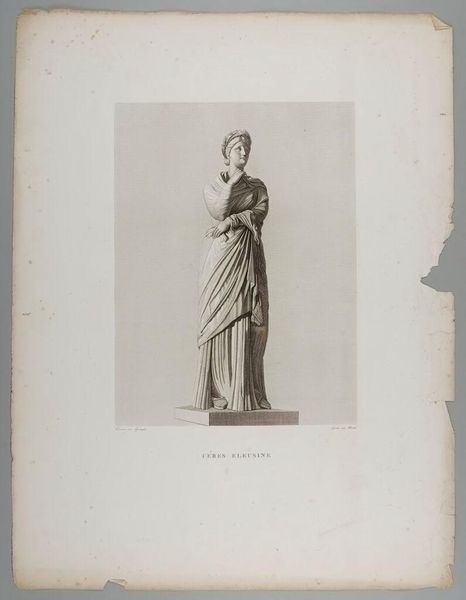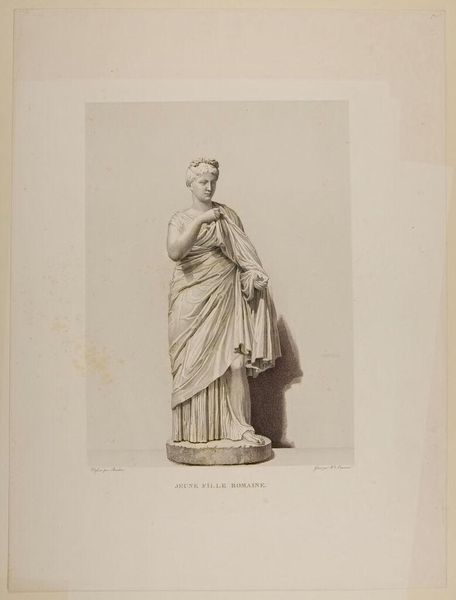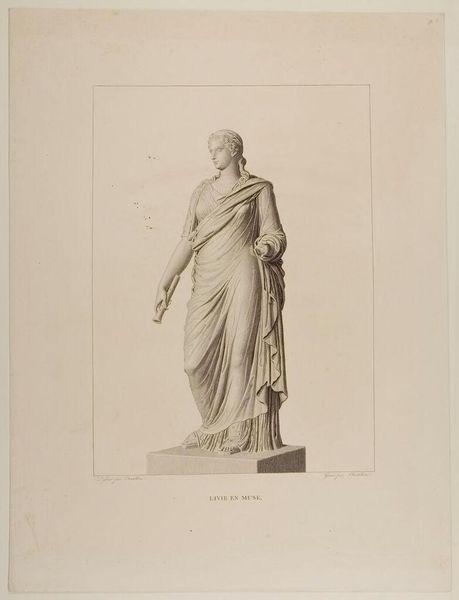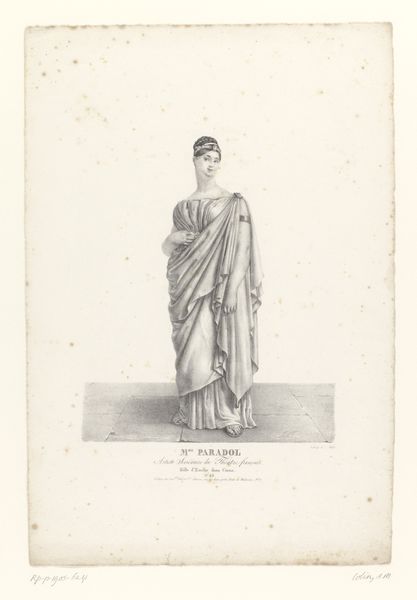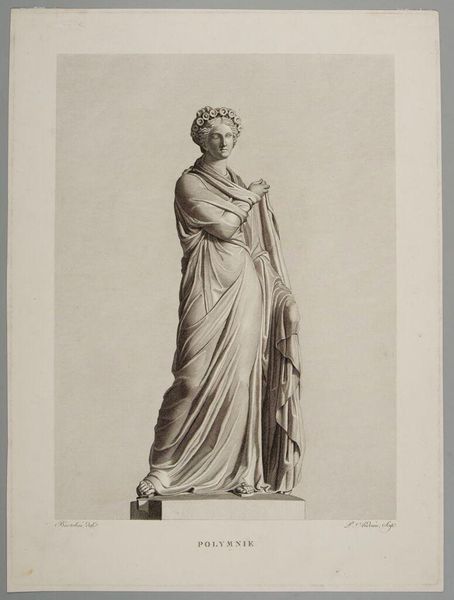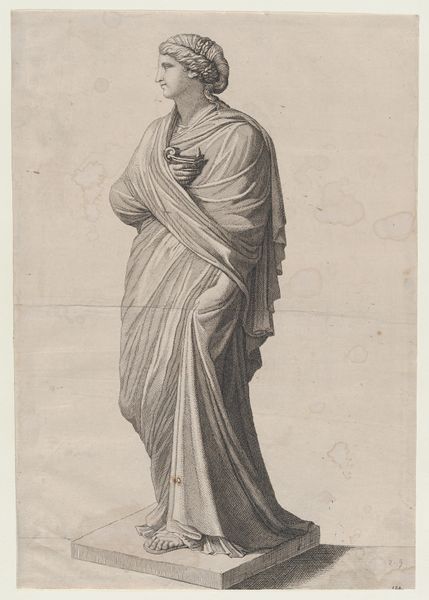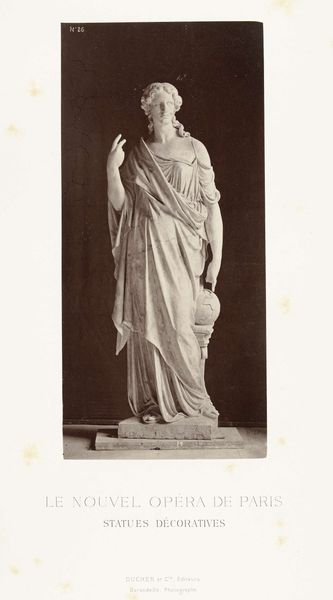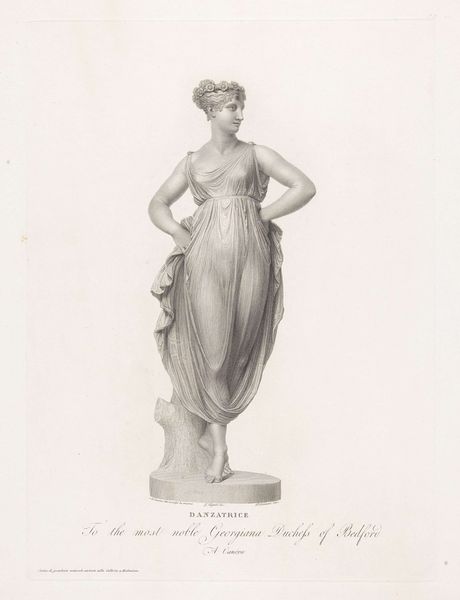
Copyright: CC0 1.0
Editor: This is Antoine Alexandre Morel’s "Statue: Cérès Eleusine". I find the classical figure quite striking, especially the drapery. What can you tell me about the socio-political context surrounding its creation? Curator: It's fascinating to consider how images of classical figures like Ceres, the Roman goddess of agriculture, were used politically. These idealized forms often symbolized stability, order, and a connection to a glorious past, something that was particularly appealing during periods of revolution or significant social change. Do you think this image promotes a specific ideology? Editor: Perhaps it’s meant to evoke a sense of timeless authority? I hadn't considered that aspect. Curator: Precisely. By associating with classical imagery, the artist and those who commissioned or displayed such works could legitimize their own power or promote certain political agendas. It's always about who controls the narrative, isn’t it? Editor: Absolutely. It’s enlightening to see how even seemingly neutral artistic choices can be steeped in political meaning.
Comments
No comments
Be the first to comment and join the conversation on the ultimate creative platform.
